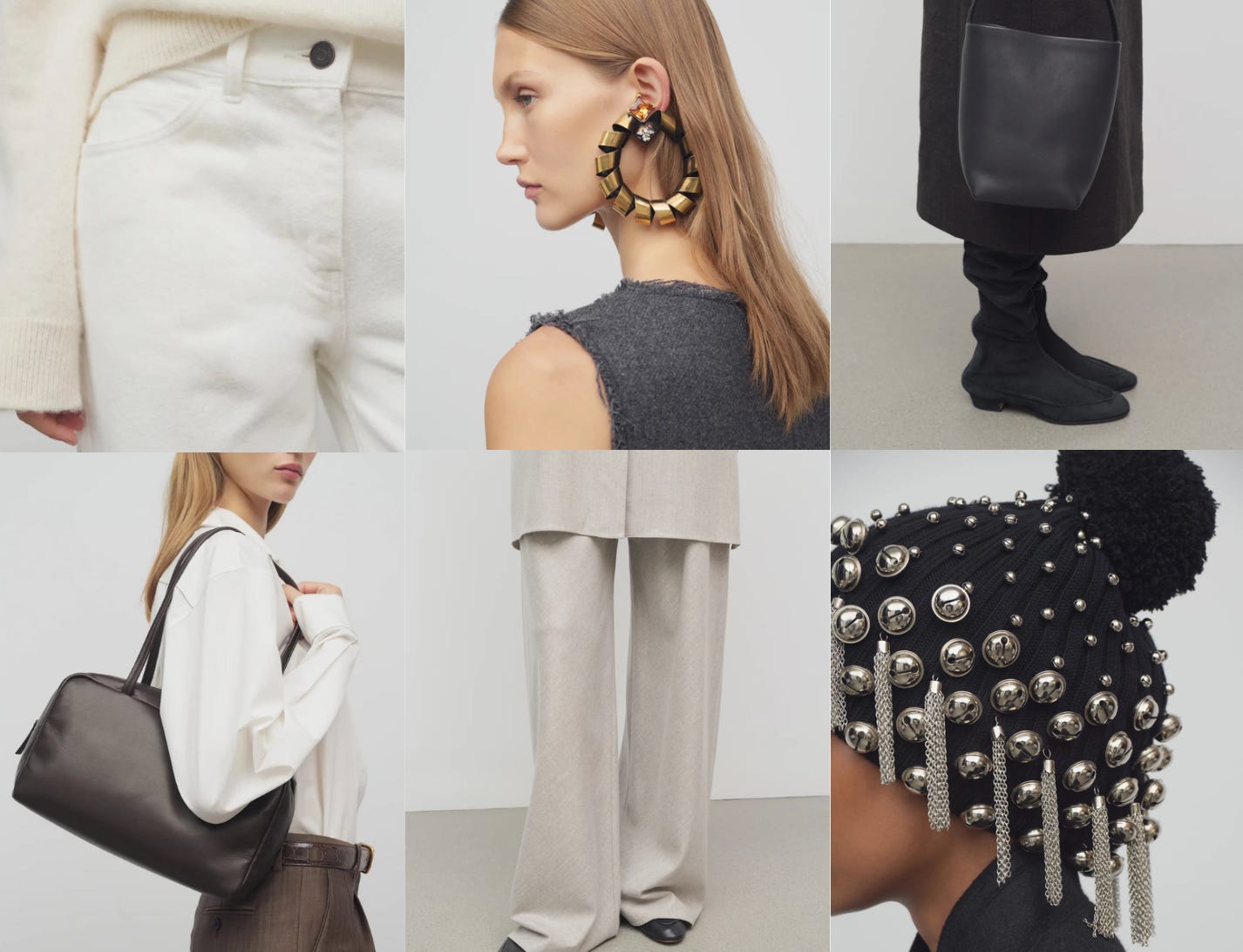A few weeks ago during my weekly midnight death scroll, I purchased 4 cobalt blue dinner forks from sabre. For the uninitiated, sabre is a parisian brand making “luxury” flatware (if you believe in such a thing), and can be found in concept stores in the LES and charming french bistros in the west village. They ran me a pretty $78.
Days later, I found myself debating a $275 hairbrush from mason pearson. I can’t explain to you the exact benefits of boar bristle, but celebrities and strangers on the internet swear by it. Plus they look chic on a nightstand.
Paying $78 for 4 forks or $300 for a hairbrush feels, by any measure, outrageous. I sent my mom a Sabre fork and asked her how much she’d pay for it — she said $2.
Now that I’m in my late 20s, I’ve stopped, for the most part, consuming fast fashion. Although there are exceptions to this, I strive to be in a place where the things I bring into my home are items that bring me joy and have longevity. The reddit thread “buy it for life” is particularly resonate — I want my possessions to be fewer and higher quality.
But lately I’ve become intrigued by the pace I find myself wanting to consume luxury goods. It feels like every week there’s a new category of “luxury” item to consider — should I buy the $400 Tekla bedding? What about a $300 Le Creuset dutch oven? $30 Comme-Si socks? Do all every day items need to be upgraded to their luxury version? Should I just go ahead and buy an entire closet of The Row?
✦✦✧
This doesn’t happen in a vacuum. The other day I read Catherine Shannon’s essay, about the dwindling quality of today’s clothing vs just 10 years ago. While it’s not anything we haven’t heard before, it did click for me why I gravitate towards buying “luxury items” in a sea of excessive choice and poorly constructed garments.
There is something uniquely comforting of knowing that a cashmere sweater from The Row will be flattering and be undoubtably high quality. In some ways, just removing the decision fatigue of having to sift through a thousand different SKUs of ill fitting garments, poor fabric composition, and ungenerous return policies makes the luxury price tags feel more merited.
The other thing at play is that due to a confluence of factors — secondhand websites, a more saturated market of luxury brands, credit card debt — everyone online seems to be consuming luxury goods these days. Speaking from my own experience, seeing all your favorite fashion girls wearing the high sport kickflare pants, you start to think that $800+ is a reasonable price to pay for entry to the cool girl club.
✦✧✦
The past few months, I’ve been feeling this pull towards simplification. I find that if I’m in a period of consuming things mindlessly, it’ll start to accumulate background anxiety and decision fatigue. The past few trips I’ve been on, I’ve tried to only stick to a small carry-on — which meant getting very creative on a week-long trip that involved 2 days of business in SF and 3 day of girls nights in mexico city.
There was something magical and freeing about wearing the same thing over and over. Having limited options actually forces me to pare down to what becomes more or less a uniform. There isn’t this constant need to optimize and recreate the wheel, but a liberation from putting on something that is both familiar and satisfying.
I’ve noticed that there’s been a trend in fashion girlies moving towards minimalism — a few weeke ago, emma chamberlain posted a 59 minute youtube video about getting rid of 95% of her closet. I was a bit thrown off that her pared back closet is still more extensive than my entire wardrobe, but it still signifies a marked shift from the days of posting coachella shopping or extensive thrift hauls.
Interestingly, the same day, mina le posted a video about why she “became basic” (her words not mine) about her recent shift towards a more pared back aesthetic. When I first started watching Mina, she sported a signature statement look (doe eyes, thin eyebrows). In her video, she talks about how as she’s found more outlets for her creativity and interest in fashion (writing, youtube, reading) she feels less of a need to dress up.


✧✦✧
I will confess that I love my sabre forks. While they haven’t changed my life, they do bring a little rush of excitement when I feel the weight of the metal and the unexpected blue while I’m eating dinner.
I don’t have a perfect heuristic for you on which luxury items are worth it and which ones you should pass on. My working hypothesis is that buying a lot of things as you’re finding your personal style and then paring down is probably a somewhat common arc for those of us who are interested in fashion.
Last week, I was chatting with the owner of a very luxe tailor shop who mentioned that even his wealthiest clients will bring in pieces from uniqlo or zara. I find that the people whose taste I admire the most are the ones who have the restraint to mix high and low — with an eye for beauty, craftsmanship and the finer details.
While home with my family I’ve spent time doing a deep dive of my closet and really digging into what items I own and love. The items that have the most longevity are, unsurprisingly, from The Row, but at the same time, there’s a tee from Aritzia that I’ve owned for 5 years with holes in the armpit that is still my favorite white tee.
What I find luxurious is finding things that speak to you and are so organic to your everyday life that you naturally have a uniform that you’re excited to wear over and over.
The other day I stumbled upon some photographs of my parents from the 90s — my dad was wearing a shaggy brown plaid shirt and my mother was wearing this pink heavy-knit sweater with animals woven into it. Both of these articles of clothing are seared into my mind from seeing my parents in them over and over and I thought how nice it was that the clothes they wore have such longevity that they are part of my childhood memories. ✧✦✦









Really enjoyed this newsletter as I too find myself confused between buying better/luxury but also being financially practical. Wanting to express myself and experiment but not wanting the burden and weight of overconsumption.
Great read as always! How much of the longevity provided from these luxury brands do you think is from the physical durability vs the ostensibly longer term fashionability?